Introduction to Vertical Gardening
Vertical gardening is an innovative approach to growing plants upward rather than outward. This method is especially beneficial for small spaces and urban environments, where traditional gardening might not be feasible.
What is Vertical Gardening?
Vertical gardening involves creating a structure that allows plants to grow upward, utilizing vertical space. This type of gardening can be implemented on walls, fences, or custom-built structures.
Benefits of Vertical Gardening for Herbs
Growing herbs vertically not only saves space but also improves air circulation, reduces pest issues, and makes harvesting easier. It’s a sustainable gardening method that maximizes limited areas efficiently.
Why Vertical Gardens are Ideal for Small Spaces
For apartment dwellers and those with limited outdoor areas, vertical gardens offer a practical solution to growing fresh herbs at home without needing a large garden plot.
Planning Your Vertical Herb Garden
Choosing the Right Location
Select a location that receives at least 4-6 hours of sunlight daily. South or west-facing walls are ideal for most herbs, ensuring they get ample light.
Selecting Herbs for Vertical Gardens
Herbs like basil, thyme, oregano, rosemary, and parsley thrive in vertical gardens. These varieties are compact and have similar sunlight and watering needs.
Tools and Materials You Need
You’ll need containers, potting soil, a watering system, a sturdy structure to support the plants, and gardening tools for planting and maintenance.
DIY Vertical Garden Ideas for Herbs

Idea 1: Hanging Pocket Planter
A hanging pocket planter is a great beginner-friendly option. It’s made with fabric pockets that can be hung on a wall or fence, ideal for herbs like mint and basil.
RELATED : 19 Small Trees for Front Yards That Explode with Color
Idea 2: Wooden Pallet Herb Garden
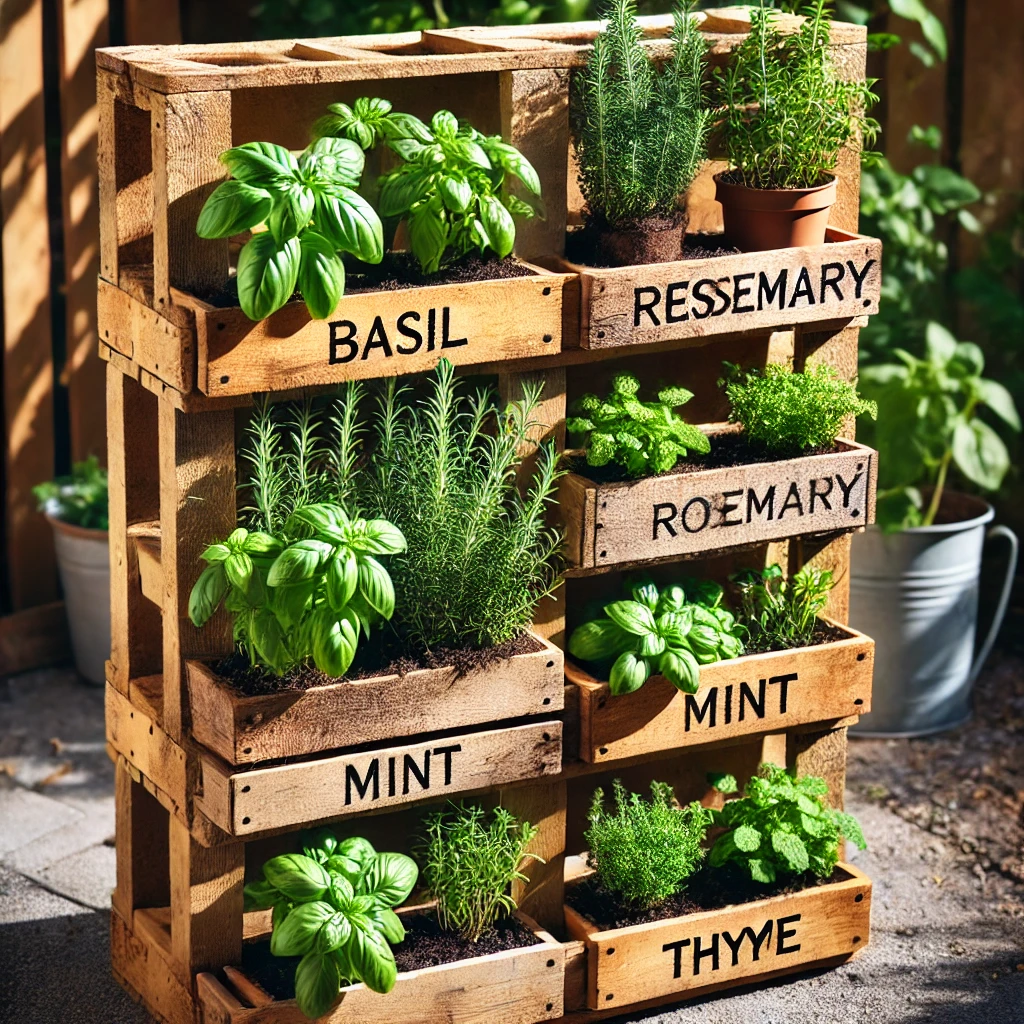
Repurpose a wooden pallet by securing it against a wall and filling the slats with soil. This rustic garden design works well for herbs like thyme, sage, and oregano.
Idea 3: Stacked Planter Box
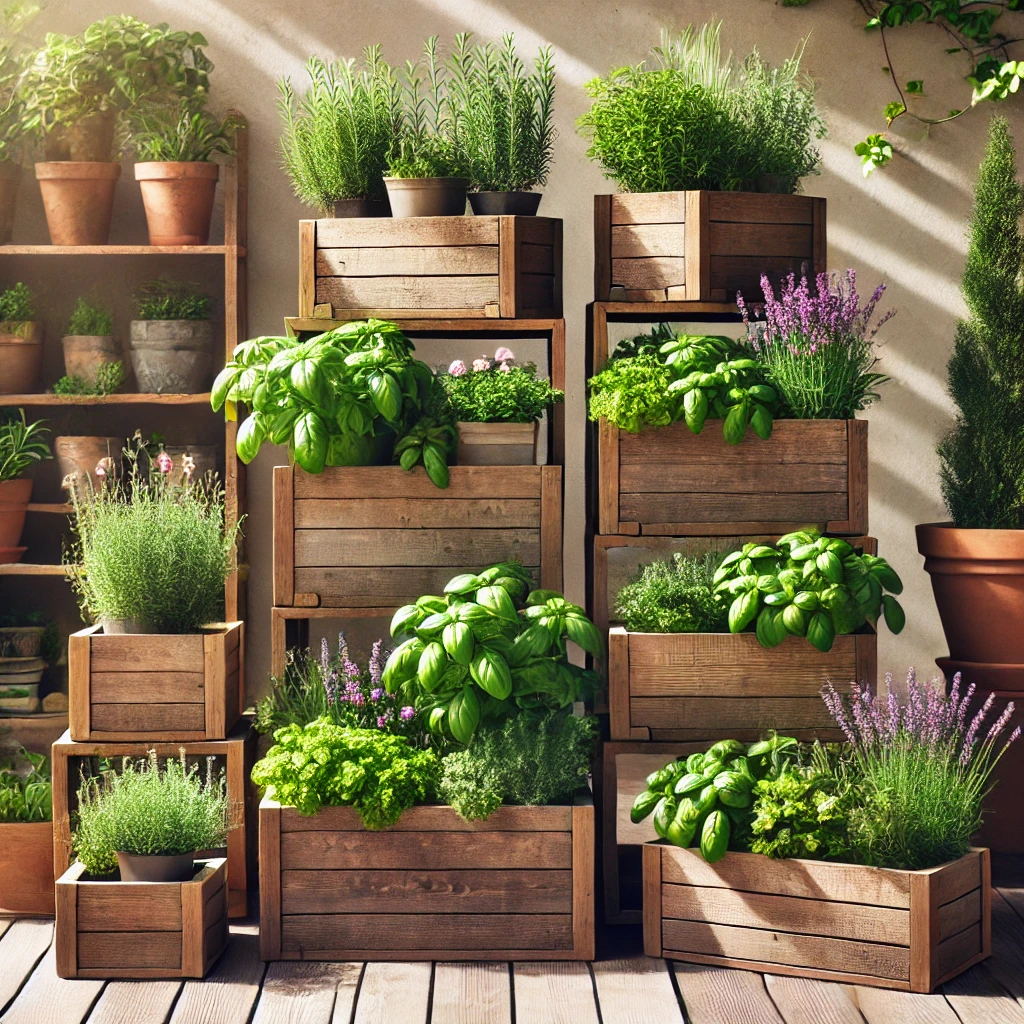
Stacked planter boxes create multiple layers for growing herbs vertically. This setup maximizes space and allows easy access for watering and harvesting.
RELATED : Did You Know There Are Simple Ways to Improve Your Soil?
Idea 4: Ladder Shelf Garden
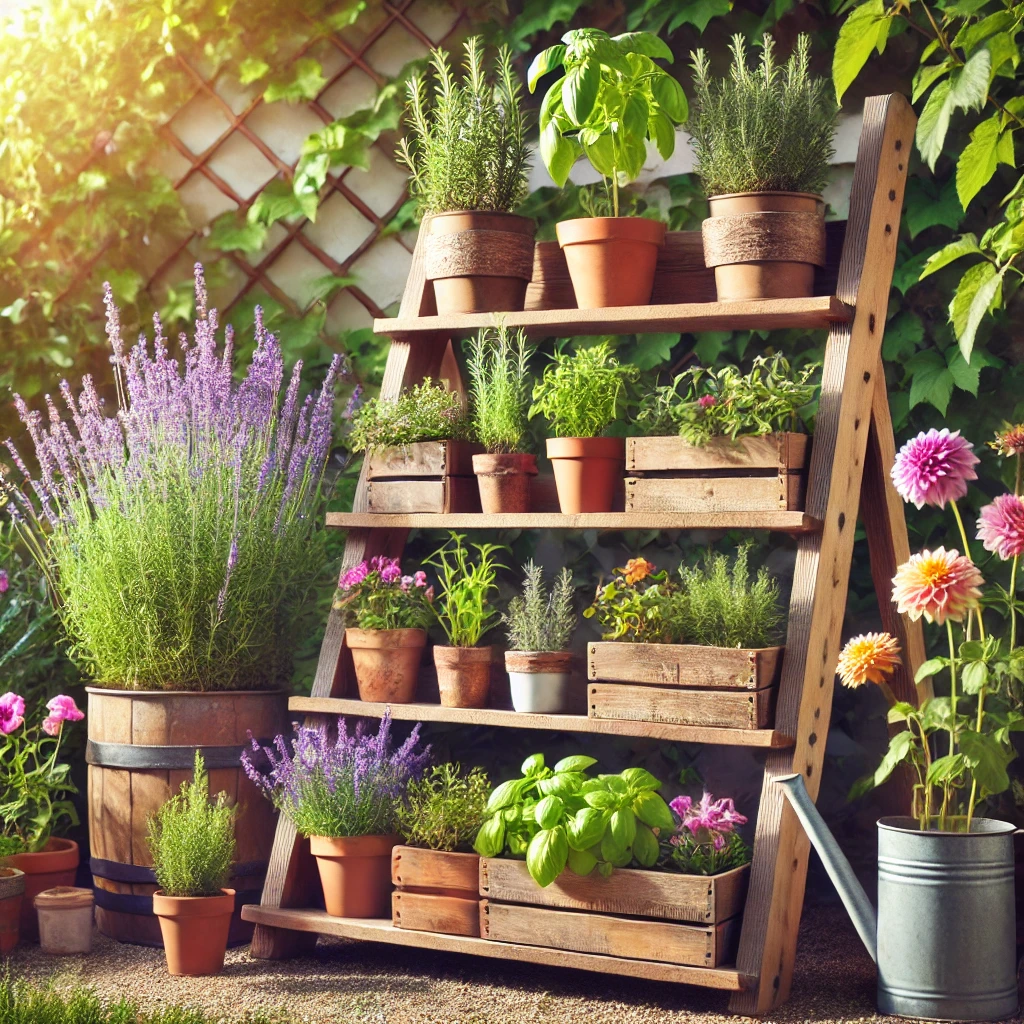
A ladder shelf garden is a stylish way to grow herbs. Use an old ladder, place pots on each step, and let your herbs bask in the sunlight from various angles.
Idea 5: Gutter Garden
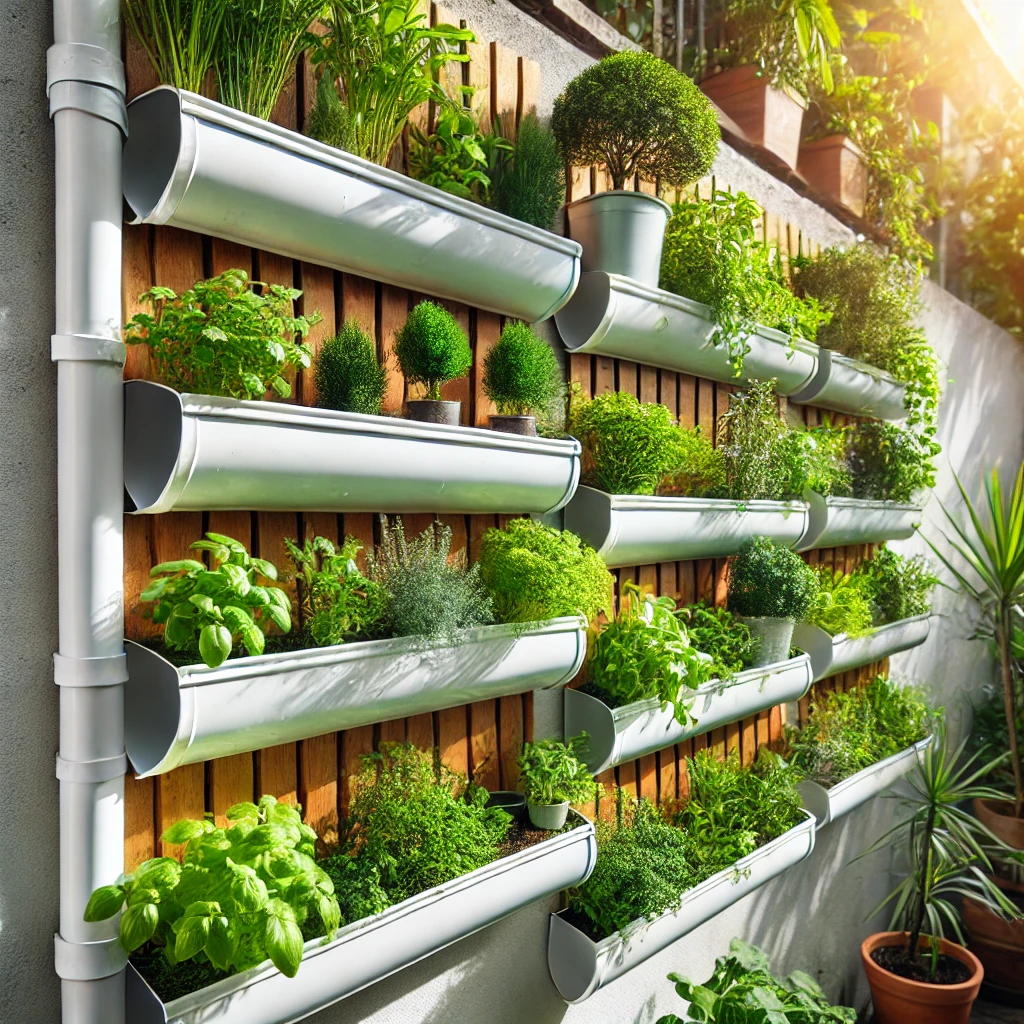
Use old rain gutters mounted on a wall as planters. These are perfect for herbs that need less soil depth, like chives, parsley, and cilantro.
Idea 6: Mason Jar Vertical Garden

Attach mason jars to a wooden board or directly on your wall. This method adds a decorative touch to your kitchen or balcony while growing fresh herbs like basil and mint.
RELATED :10 Best Trees with White Flowers to Brighten Up Your Landscape
Idea 7: Recycled Plastic Bottle Garden

Cut and arrange recycled plastic bottles to create a hanging garden. This eco-friendly option is great for lightweight herbs like dill and chives.
Idea 8: Trellis with Climbing Herbs
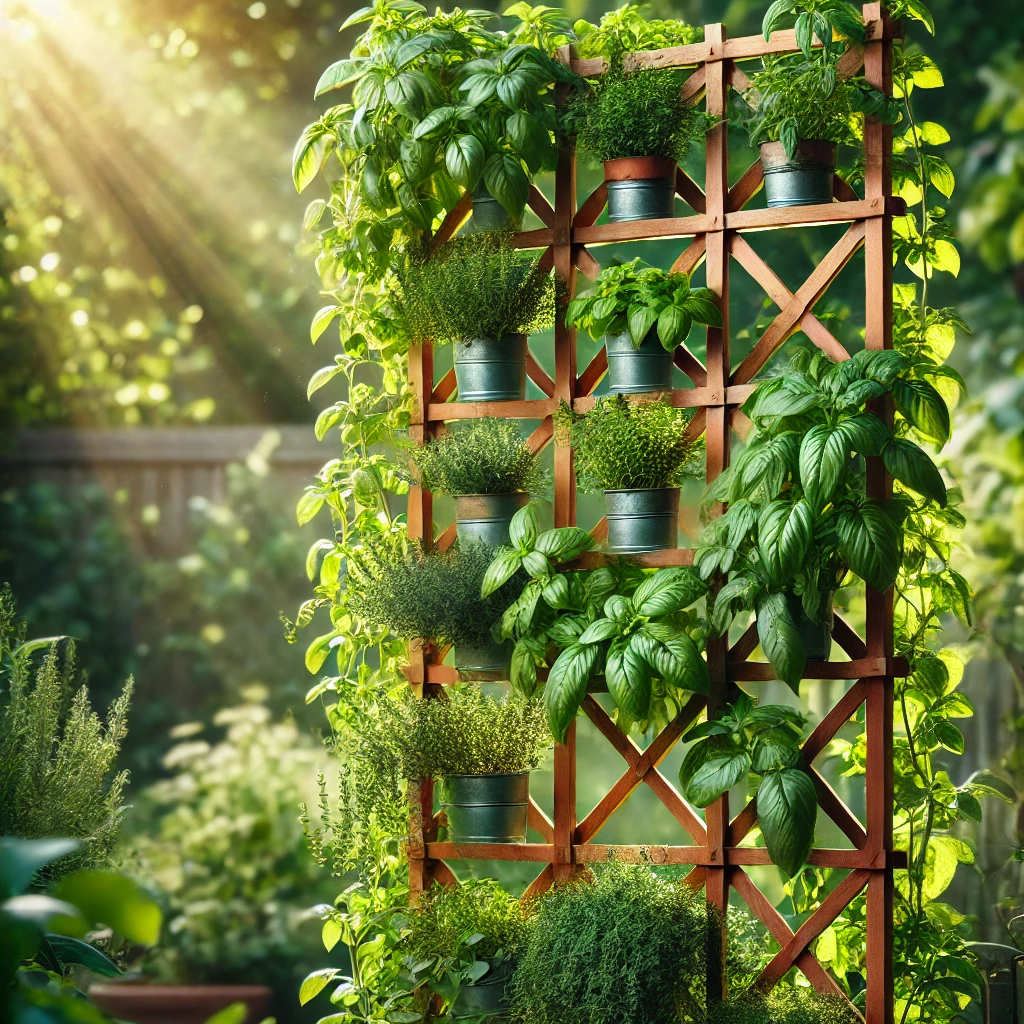
A trellis can support climbing herbs like rosemary and thyme. It’s a perfect way to add greenery to your outdoor walls or patio areas.
Idea 9: Hydroponic Tower Garden
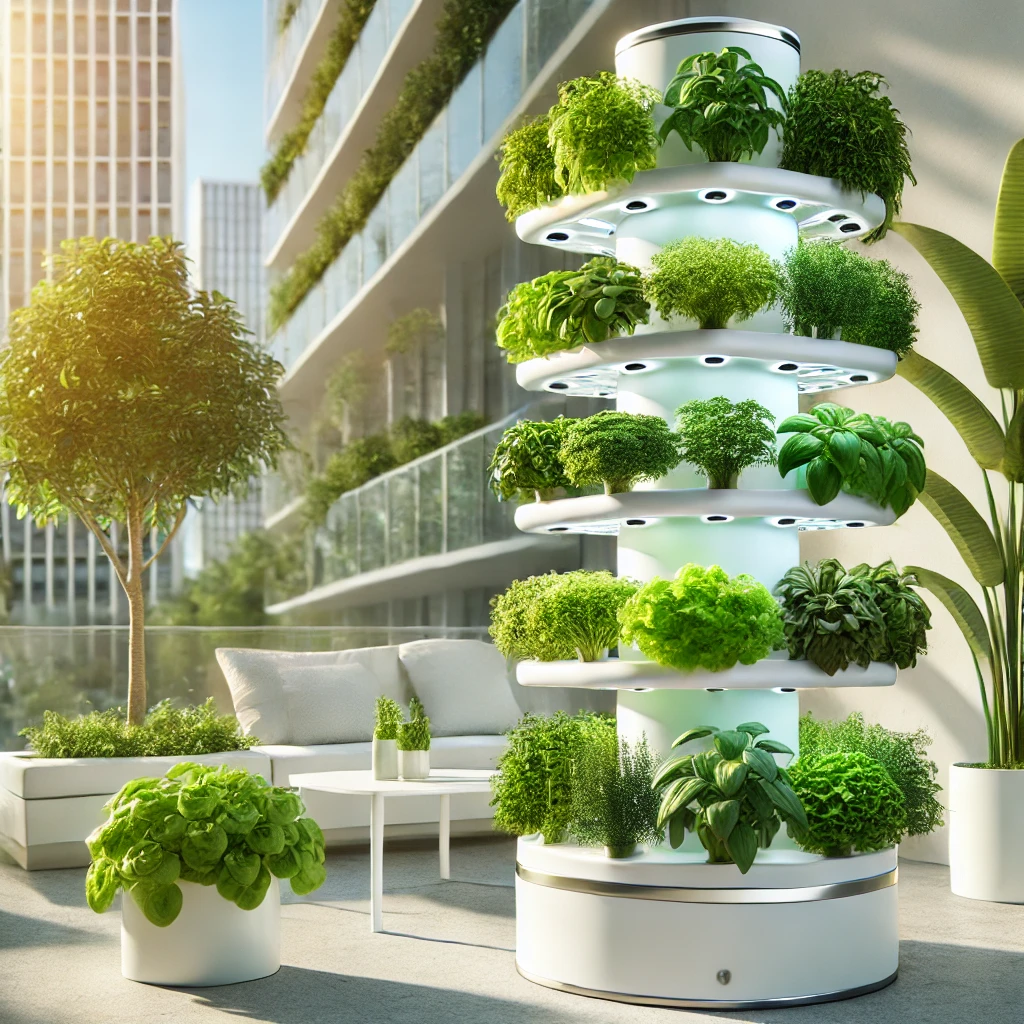
A hydroponic tower garden is a soil-free method that allows you to grow herbs using water and nutrients. It’s efficient and suitable for a variety of herbs, including basil and mint.
Care and Maintenance of Your Vertical Herb Garden
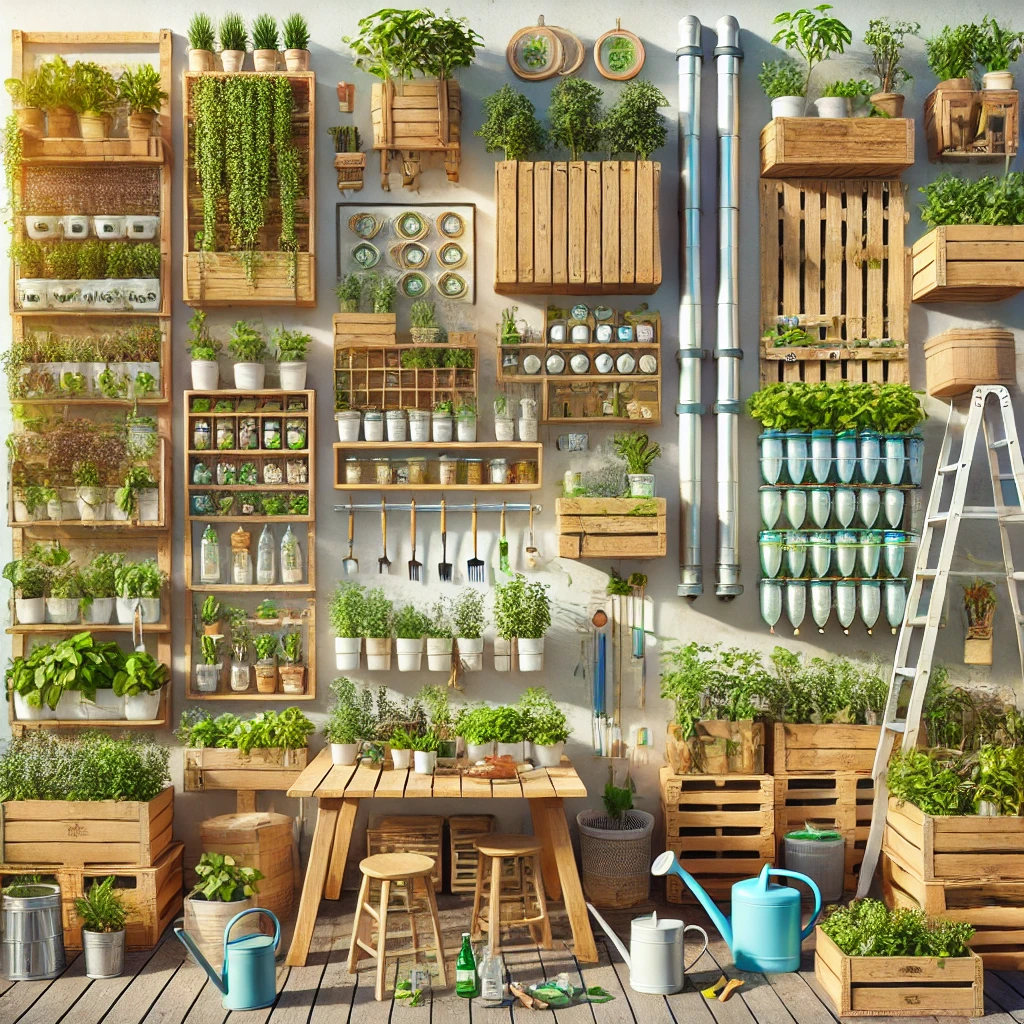
Watering Techniques for Vertical Gardens
Water from the top and let it trickle down to lower levels, ensuring even distribution without over-saturating the soil.
Fertilization and Soil Management
Use organic fertilizers to enrich the soil and maintain its health. Regularly check soil pH to ensure optimal growth conditions for your herbs.
Managing Pests in Vertical Herb Gardens
Natural pest control methods like neem oil or planting companion herbs can help keep your garden free from harmful insects.
Seasonal Tips for Growing Herbs
Best Herbs to Grow in Each Season
Plant mint, basil, and chives in summer, while parsley, sage, and rosemary do better in cooler seasons like spring and fall.
Adapting Your Garden to Weather Changes
Protect your vertical herb garden from extreme weather by moving it indoors or using protective covers during winter.
Common Mistakes to Avoid in Vertical Herb Gardening
Overcrowding the Plants
Avoid planting too many herbs in a small space, which can lead to competition for nutrients and sunlight.
Poor Drainage Issues
Ensure your containers have proper drainage to prevent root rot and other water-related issues.
Inadequate Sunlight Exposure
Place your vertical garden in a spot that gets ample sunlight; otherwise, your herbs might struggle to grow.
FAQs About DIY Vertical Herb Gardens
- What Herbs Grow Best in Vertical Gardens? Herbs like basil, rosemary, thyme, mint, and parsley are perfect for vertical gardens due to their compact growth.
- How Do I Water My Vertical Herb Garden Properly? Water from the top down, allowing gravity to distribute moisture evenly to all plants.
- Can I Grow Herbs Indoors Using Vertical Gardens? Yes, many herbs can be grown indoors as long as they receive adequate light, either from natural sunlight or grow lights.
- What Are the Best Materials for a Vertical Herb Garden? Use materials like wood, plastic, fabric pockets, or metal depending on the aesthetics and durability you prefer.
- How Much Sunlight Do Vertical Herb Gardens Need? Most herbs require at least 4-6 hours of direct sunlight daily for optimal growth.
- How to Prevent Mold in Vertical Herb Gardens? Ensure proper air circulation and avoid overwatering to prevent mold and mildew from forming.
